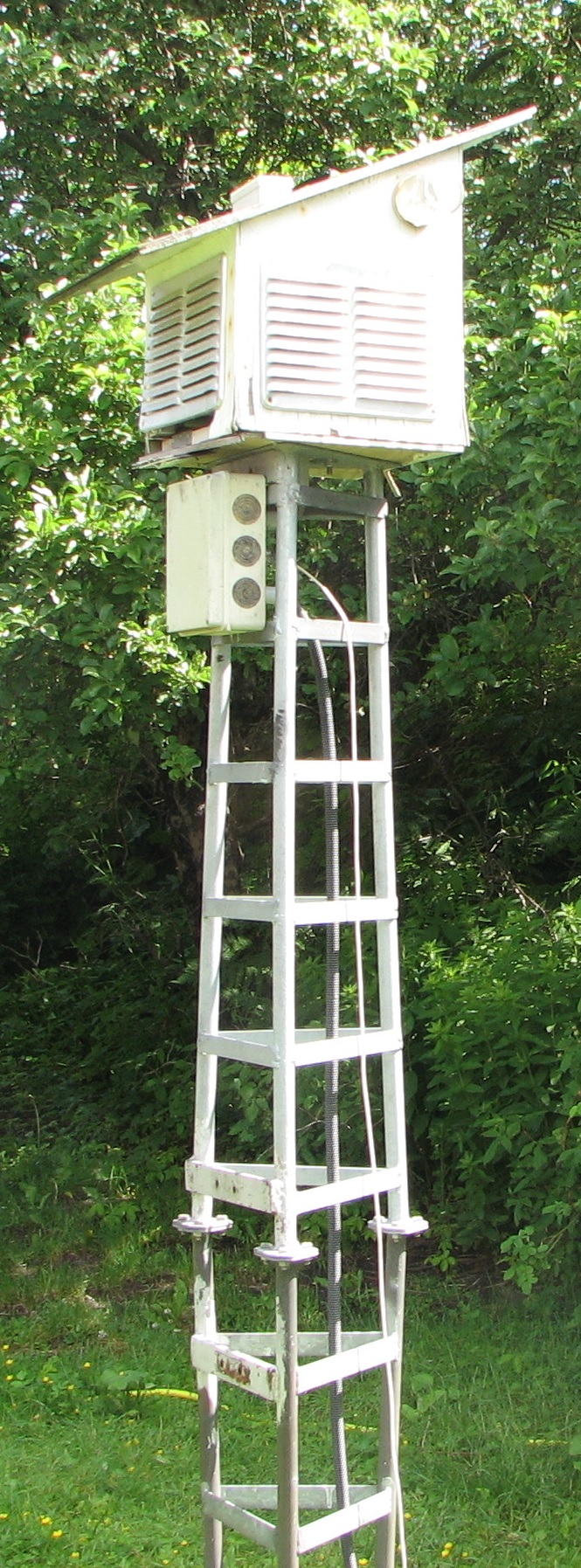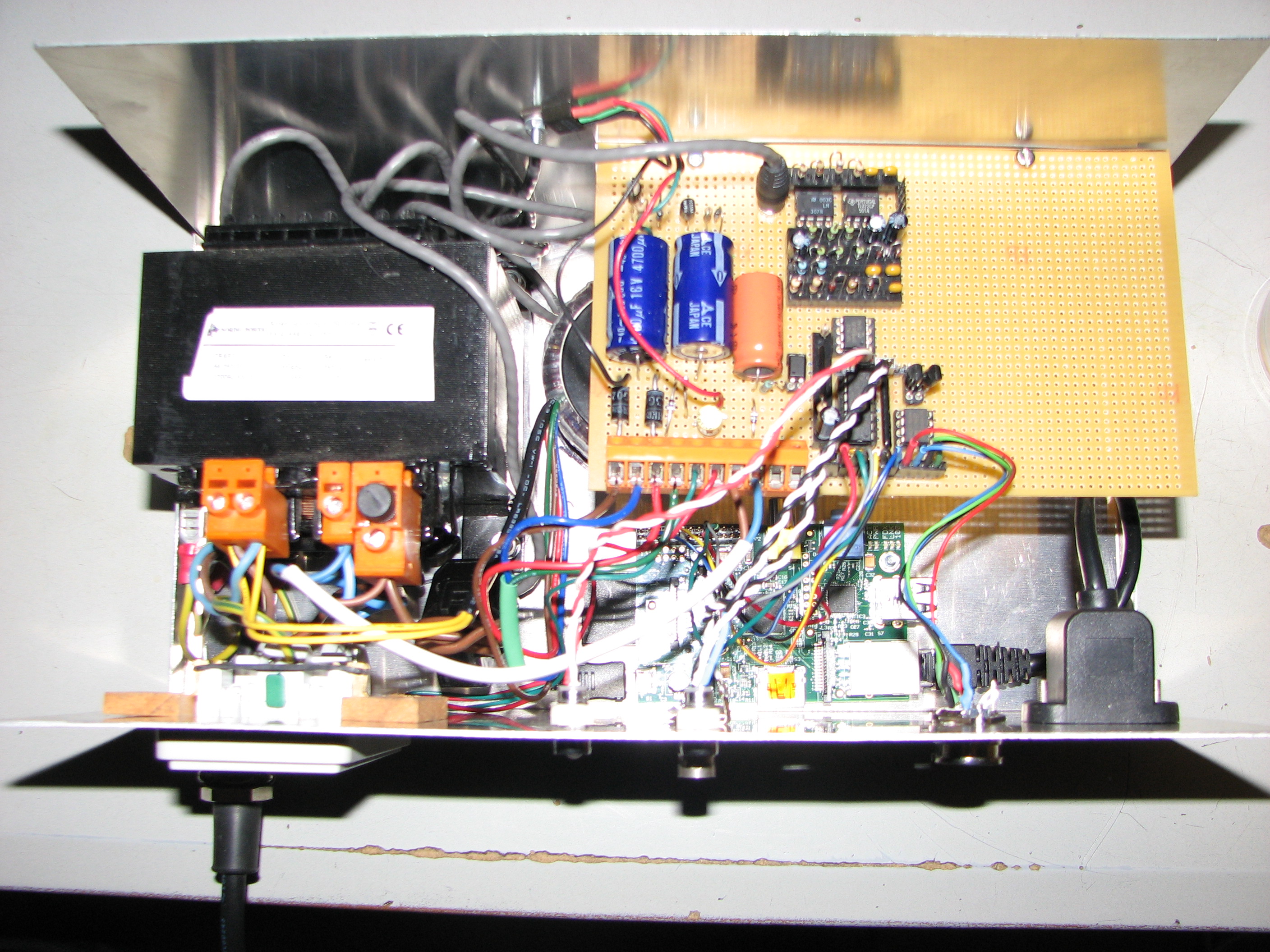
Old Tower
The earliest rain gauge was a tipping-spoon device with a resolution of 1 mm. A reed switch normally closed would open briefly when the spoon tipped over and emptied. This worked fine during the summer but in the winter it froze and a big lump of ice stuck in the mechanism rendering it inoperable until next thaw.
Then I was given a Lambrecht 1518 unit, which has a see-saw mechanism that tips over and briefly closes a reed switch every 1/10 mm. This device connects to the world with a military-style 7-pin connector, of which two pins are the rain-gage switch and two others are 42V AC max 6A for the heating system.
The pulses from the reed switch are fed to a Raspberry Pi GPIO line via a Schmitt-trigger. As the 1518 also has a heating system that runs off of 42V AC, I made some additional electronics to supervise this: that the 42V AC voltage is present where it should, and how much current is being drawn by the heating system.
The system unit is also serving the weather station tower with an i2c connection.

The 42V transformer is on the left, with the Danish standard connector. There is a current-transformer connected on the output, and fed to a rectifier and A-D converter so that the current drawn can be measured and reported.
Experience has shown that running a Raspberry Pi for long periods with just the SD card works, as long as the power supply is good enough. Lightweight switching supply for mostly indoor and room-temperature use tend to stop working reliably when they get below about 10 C. Thus, this unit uses a traditional linear power supply with a toroid transformer (partially visible at the left of the circuit board) and a 5V voltage regulator (visible at the top, slightly left of center, just off the circuit board), and this has done well through the winter. As the power supply components and the computer emit heat, the temperature inside the case has never gone very far down.